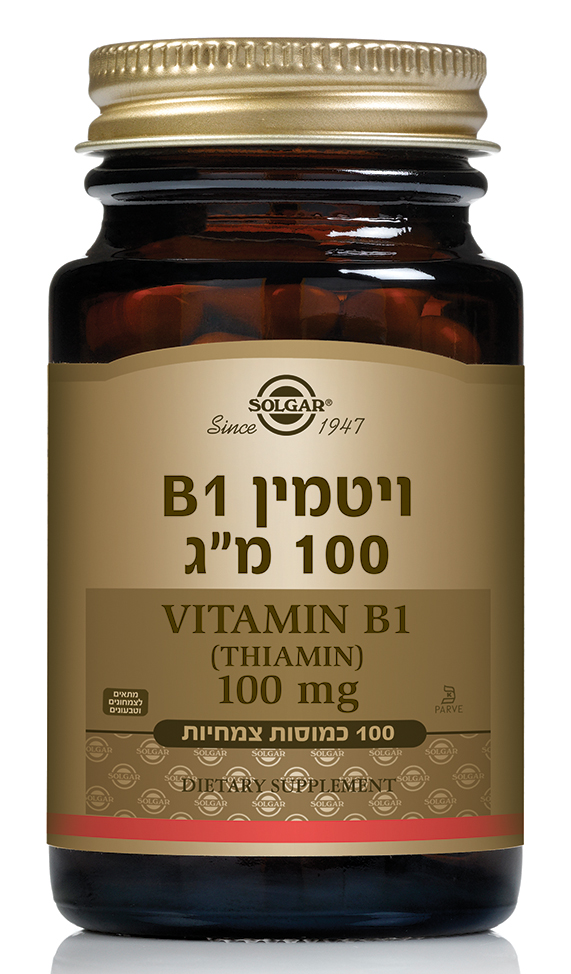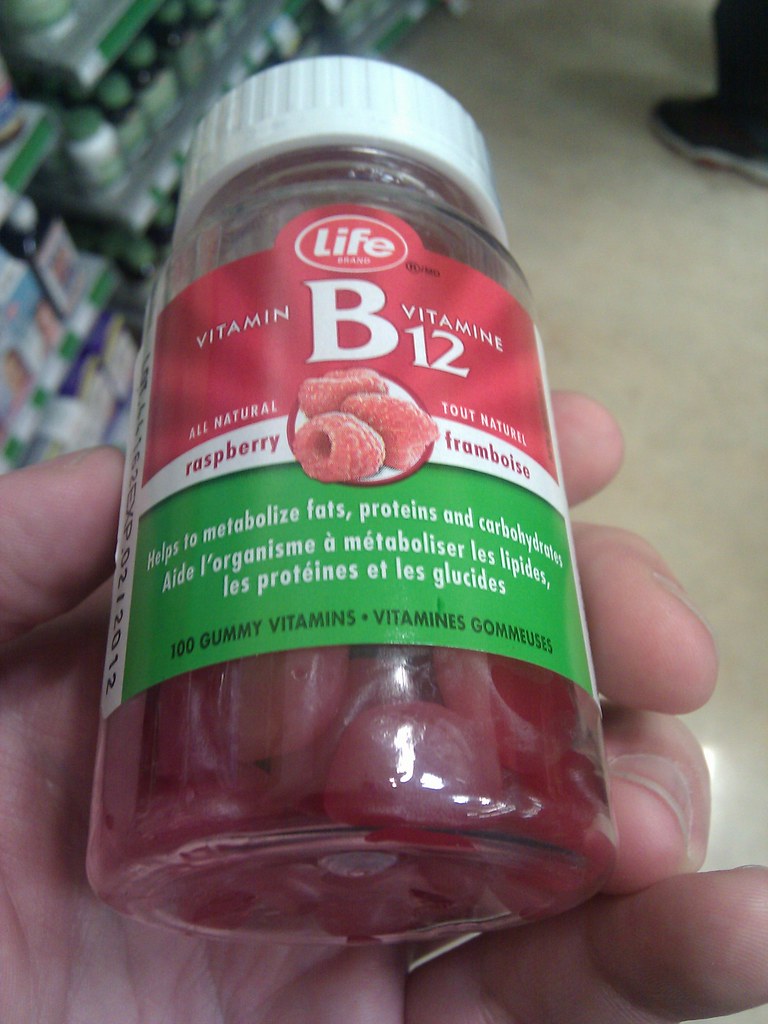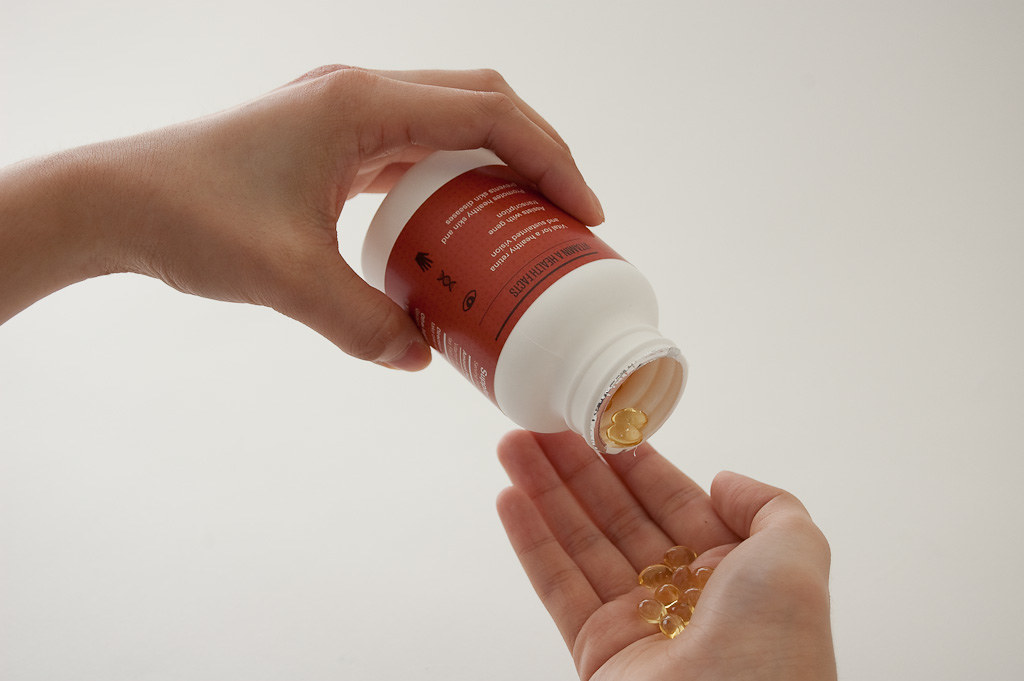
In our fast-paced world, the pursuit of health and wellness often leads us down the path of dietary supplements, particularly vitamins. Shelves brim with an array of pills, capsules, and powders, each promising enhanced vitality, bolstered immunity, or improved specific bodily functions. For many, these supplements have become a daily ritual, a perceived shortcut to nutritional perfection, driven by compelling marketing and a genuine desire to optimize well-being.
However, a closer look at the vitamin supplement industry reveals a landscape fraught with complexities and, at times, a significant lack of transparency. Wellness experts are increasingly vocal, urging consumers to pause and critically evaluate these products, often advising against what they consider to be wasteful expenditures. Their warnings are not born of skepticism toward vitamins themselves—which are, undoubtedly, organic molecules essential for proper metabolic function and cannot be synthesized in sufficient quantities by the body—but rather from concerns about the efficacy, safety, and regulatory oversight of the supplements we so readily consume.
This article aims to shed light on 12 critical areas where the vitamin supplement industry struggles with transparency, prompting wellness experts to recommend a more cautious approach to supplementation. We’ll delve into the nuances of what constitutes a true benefit versus a perceived one, the regulatory environment that shapes product availability, and the potential pitfalls that consumers might unknowingly encounter, empowering you to make truly informed decisions about your health and your money.

1. **General Lack of Efficacy for Healthy Individuals**One of the most significant reasons wellness experts advise caution is the pervasive misconception that vitamin supplements universally benefit healthy individuals. Despite the widespread belief, scientific evidence often paints a different picture. For those who are already eating a varied and balanced diet, there is “little evidence that supplements have any benefits with respect to cancer or heart disease,” which are among the leading health concerns today.
This finding challenges the notion that taking a daily multivitamin or specific nutrient will act as a blanket preventative measure against serious illnesses. The historical context shows that the mass production and marketing of vitamin supplements, including multivitamins, began in the 1950s “to prevent vitamin deficiencies in the general population.” While effective for specific deficiencies, this preventative framing has been broadly applied, sometimes without sufficient scientific backing for healthy populations.
Therefore, for many individuals, the expenditure on general vitamin supplements may not translate into tangible health improvements. The focus, as repeatedly emphasized by health professionals, should primarily remain on obtaining essential nutrients through a diverse diet, which naturally provides the necessary organic molecules for metabolic function, rather than relying on supplemental forms that may offer questionable advantages.
Read more about: Navigating the Road to Relief: Essential Features for 2025 Cars to Support Drivers with Back Pain
2. **The Specific Risks of Vitamins A & E Supplementation**Beyond a general lack of proven benefits, certain vitamin supplements, when taken by otherwise healthy individuals, have been found to be not only ineffective but potentially harmful. This is particularly true for Vitamin A and Vitamin E. Research indicates that for “generally healthy individuals,” Vitamin A and E supplements “not only provide no health benefits… but they may increase mortality.” This stark warning underscores a crucial transparency issue in supplement marketing.
While vitamins A (retinols, carotenoids) and E (tocopherols, tocotrienols) are essential organic molecules with vital biochemical functions—Vitamin A regulating cell growth and differentiation, and Vitamin E functioning as an antioxidant—their supplemental forms can pose risks. The body stores fat-soluble vitamins like A and D in significant amounts, mainly in the liver, leading to the potential for accumulation and dangerous hypervitaminosis if intake is excessive.
For instance, the context notes that studies supporting the increased mortality conclusion for A and E included smokers, for whom it was “already known that beta-carotene supplements can be harmful.” This specific detail highlights the importance of transparently communicating potential risks and contraindications, rather than universally promoting supplements that may be detrimental to certain demographics or in specific conditions.
Read more about: The 10 Worst Keto Mistakes That Chefs Wish You Would Stop Making: A Guide to Success

3. **Questionable Benefits of Vitamin D & Calcium for Bone Fractures**Another area where transparency is struggling, leading wellness experts to question the value of certain supplements, is the widely promoted belief in the efficacy of Vitamin D and calcium for preventing bone fractures, especially among the elderly. For years, these supplements have been a cornerstone of bone health recommendations, yet recent research has cast doubt on their broad preventative power.
A significant 2018 meta-analysis, referenced in the provided context, “found no evidence that intake of vitamin D or calcium for community-dwelling elderly people reduced bone fractures.” This finding directly challenges a commonly held assumption and an extensive market built around these particular supplements for bone health. The lack of demonstrable benefit for a specific, targeted population highlights a disconnect between popular perception and scientific evidence.
Vitamin D (calciferols) is essential, providing a hormone-like function in regulating mineral metabolism for bones and other organs. However, the absence of evidence for fracture reduction from supplementation in this demographic suggests that the complex interplay of bone health might not be solely addressed by these pills. Consumers need transparent information about such evolving scientific understanding to avoid wasting money on products that may not deliver the expected outcome for their specific needs.

4. **Regulatory Gaps in the U.S. Dietary Supplement Market**The regulatory environment governing dietary supplements in the United States presents a major transparency challenge that wellness experts frequently highlight. Unlike pharmaceutical drugs, “most countries place dietary supplements in a special category under the general umbrella of foods, not drugs.” This classification has profound implications for product oversight and consumer safety.
Crucially, in the U.S., “there is no FDA approval process for dietary supplements, and no requirement that manufacturers prove the safety or efficacy of supplements introduced before 1994.” This means that countless products on the market today have never undergone pre-market review by the Food and Drug Administration. Manufacturers are responsible for ensuring their products are safe before marketing, but this system relies heavily on reactive monitoring.
“The Food and Drug Administration must rely on its Adverse Event Reporting System to monitor adverse events that occur with supplements.” This reactive approach contrasts sharply with the proactive testing and approval required for drugs, creating a transparency vacuum where consumers must often trust manufacturers’ claims without independent verification of safety and effectiveness, a trust that is not always warranted.
Read more about: A Pivotal Advance in Obesity Treatment: Eli Lilly’s Oral Pill Shows Significant Weight Loss in Landmark Trial

5. **Global Discrepancies in Supplement Regulation**Adding another layer of complexity to the transparency issue is the wide variation in regulatory frameworks across different countries. “Regulation of supplements varies widely by country,” as noted in the context. This international patchwork of rules means that a supplement considered permissible and safe in one region might be subject to different standards, or even prohibited, elsewhere.
For example, while the U.S. relies on post-market surveillance for most supplements, the European Union’s Food Supplements Directive “requires that only those supplements that have been proven safe can be sold without a prescription.” Furthermore, both the EU and Japan, along with the U.S., “establish tolerable upper intake levels (ULs)” for vitamins with documented toxicity, but even these levels can differ significantly from one region to another.
This global inconsistency in regulation can be profoundly confusing for consumers and raises questions about universal standards of transparency regarding product safety and dosage recommendations. Wellness experts warn that without harmonized standards, consumers face a challenge in discerning which products meet rigorous safety and efficacy benchmarks, making it difficult to make informed choices based on trustworthy, consistent information.
Read more about: A Comprehensive Guide for Consumers: Navigating the Complexities of Importing a Car from Abroad

6. **The ‘Vitamania’ Phenomenon: Over-reliance on Supplements**The context introduces the term “vitamania,” coined in 1942 by Robert W. Yoder, to describe “the appeal of relying on nutritional supplements rather than on obtaining vitamins from a varied diet of foods.” This historical observation remains highly relevant today, as marketing strategies continue to foster a culture of obsessive consumption, often presenting supplements as essential for a healthy lifestyle, even when the “beneficial effects of which are questionable.”
Brands often promote supplements with alluring claims, as seen historically with cod-liver oil marketed as “bottled sunshine” or yeast cakes promoted for “scientifically determined nutritional value” rather than taste. This aggressive promotion bypasses the fundamental reality that “vitamins are essential nutrients… that therefore must be obtained through the diet” first and foremost. The preoccupation with pills can distract from the proven health benefits of whole foods.
This widespread over-reliance on supplements, fueled by optimistic marketing, contributes to a lack of transparency about what constitutes genuinely adequate nutrition. Wellness experts stress that true health comes from a balanced diet of real foods, and that for many, the expense of supplements is a “waste of money” when those funds could be better allocated to purchasing nutrient-dense foods, which offer a far more complex and beneficial spectrum of nutrients.
Navigating the world of vitamin supplements can feel like a quest for optimal health, a journey filled with promises of vitality and well-being. But as we’ve explored, this path is often paved with transparency challenges and complex scientific nuances. While Section 1 shed light on regulatory shortcomings, questionable efficacy for healthy individuals, and the pervasive ‘vitamania’ culture, our investigation continues. It’s time to delve deeper into the often-overlooked dangers and intricate details that wellness experts urge us to understand before reaching for that next bottle.
Empowering yourself with knowledge is the best defense against marketing hype and misinformation. The following six critical points will further illuminate why a cautious, informed approach to vitamin supplementation is not just wise, but essential for safeguarding your health and your finances. We’ll uncover everything from the risks of too much of a good thing to the misleading history of vitamin names, equipping you to make truly sound decisions about what you put into your body.

7. **The Dangers of Hypervitaminosis: When More Isn’t Always Better**Many of us operate under the assumption that if a little bit of something is good for us, then more must be even better. This common misconception, however, can lead to serious health repercussions when it comes to vitamin supplementation. Wellness experts are clear: both deficient and excessive intake of a vitamin can potentially cause clinically significant illness. This is particularly true for fat-soluble vitamins like A and D, which, unlike their water-soluble counterparts, are not readily excreted and can accumulate in the body, primarily in the liver, leading to a toxic condition known as hypervitaminosis.
The potential for harm from excessive intake, or hypertoxicity, is a crucial transparency issue. While the likelihood of consuming too much of any vitamin directly from food is quite remote, excessive intake from dietary supplements is a documented occurrence. This is a significant concern, especially when we consider the alarming statistics: in 2016 alone, over 63,931 individuals reported overdose exposures to vitamins and multi-vitamin/mineral formulations to the American Association of Poison Control Centers, with a startling 72% of these exposures involving children under the age of five. This highlights the real-world dangers of supplements being treated as benign health boosters rather than potent biological agents.
Furthermore, even among adults, exceeding tolerable upper intake levels (ULs) for certain vitamins is not uncommon. For example, a national diet and supplement survey in the U.S. revealed that about 7% of adult supplement users surpassed the UL for folate, and 5% of those over 50 years old exceeded the UL for vitamin A. These figures underscore a broader lack of awareness regarding appropriate dosages and the cumulative effect of supplementation, leading consumers to unknowingly expose themselves to risks. Understanding these ULs, which are established by governmental organizations, is paramount, and yet, this information is often not clearly communicated or understood by the average consumer.
While vitamins are indispensable for proper metabolic function, taking them in quantities beyond what your body needs, especially through supplements, can shift their role from beneficial to detrimental. This isn’t just about wasting money; it’s about potentially compromising your health. Always remember that your body is a finely tuned system, and balance is key—more isn’t always the answer, and sometimes, it can be the problem.

8. **The Global Puzzle: Discrepancies in Recommended Daily Allowances**Imagine trying to follow a recipe where every cookbook gives you different measurements for the same ingredients. That’s often the reality consumers face when trying to understand appropriate vitamin intake, thanks to a global patchwork of recommendations. Wellness experts continually point out that government organizations worldwide do not necessarily agree on the precise amounts needed to avoid deficiency, nor do they concur on the maximum amounts to avoid the risk of toxicity. This international discord creates significant confusion and makes truly informed decision-making a daunting task.
Consider Vitamin C, for example. The recommended daily intake can swing wildly, ranging from a mere 40 mg/day in India to a significantly higher 155 mg/day in the European Union. These aren’t minor variations; they represent dramatically different philosophies on what constitutes adequate nutrition. Such discrepancies are not isolated incidents but are evident across a spectrum of vitamins, including Vitamin A, D, and E, as illustrated by differing Upper Limit (UL) values set by the U.S., the EU, and Japan. How can a consumer confidently choose a supplement or interpret dosage instructions when the very experts can’t align?
This lack of harmonization is further complicated by the varied classifications of supplements themselves. In the U.S., they fall under foods, while the European Union’s Food Supplements Directive mandates that only those proven safe can be sold without a prescription. These differing regulatory environments directly influence product availability, labeling, and the perceived safety of supplements from one region to another. A product readily available in one country might be considered an over-the-counter drug in another, or even prohibited due to dosage or ingredient concerns.
For the average person, this global regulatory maze means that information about optimal intake and potential risks is fragmented and inconsistent. It underscores the critical need for consumers to look beyond a single label or a quick online search. Understanding the source of recommendations and the context of regulatory frameworks is vital. Without this comprehensive understanding, consumers are often left to navigate a confusing landscape, making it difficult to discern truly reliable advice from marketing claims that may only adhere to the least stringent standards.

9. **Beyond the Pill: The Crucial Difference Between Food and Synthetic Supplements**In our quest for health, it’s easy to believe that all vitamins are created equal, whether they come from a vibrant plate of vegetables or a convenient capsule. However, wellness experts consistently highlight a crucial distinction: the difference between obtaining nutrients from a varied diet of whole foods versus relying on synthetic supplementation. Vitamins are, by definition, essential nutrients that must be obtained through our diet, as our bodies cannot synthesize them in sufficient quantities for survival. This fundamental biological reality forms the bedrock of nutritional health, yet it’s often overshadowed by the allure of supplements.
When you consume vitamins through whole foods, they come packaged with a complex array of other beneficial compounds—minerals, fibers, antioxidants, and phytochemicals—that work synergistically. This intricate interplay is something that a single synthetic pill simply cannot replicate. Furthermore, the body’s ability to absorb and utilize nutrients can be influenced by the food matrix they are delivered in. For instance, some vitamins may become more “bio-available,” or usable by the body, when foods are cooked in specific ways, a nuanced benefit that doesn’t necessarily translate to a lab-synthesized pill.
While supplements are designed to provide concentrated doses, this often means isolating specific forms of a vitamin. The context reminds us that most vitamins are not single molecules but groups of related molecules called vitamers—like the eight vitamers of vitamin E, which include various tocopherols and tocotrienols. A supplement might offer just one or two of these, potentially missing the full spectrum of benefits found in nature. This isn’t to say supplements never have a place; food fortification, where governments mandate adding vitamins to staple foods like flour or milk, has successfully prevented deficiencies on a population level. But this is a controlled, public health strategy, distinct from individual, unregulated supplementation.
The real danger lies in the misconception that supplements can entirely replace a healthy diet. For those eating a varied diet, the likelihood of vitamin poisoning from food is remote, but the risk significantly increases with supplement use. Wellness experts emphasize that financial investment in nutrient-dense whole foods is almost always a more effective and safer strategy than relying on an ever-growing array of pills. Understanding this core difference empowers you to prioritize dietary intake and view supplements for what they truly are: complements, not substitutes, and often unnecessary for healthy individuals.

10. **The Unseen Layers: Complexities in Supplement Formulations**When you pick up a bottle labeled, say, “Vitamin E,” you might assume you’re getting a straightforward dose of a single nutrient. However, the reality of supplement formulations is far more intricate than most consumers realize, presenting another significant transparency hurdle that wellness experts frequently address. The scientific definition itself points to this complexity: vitamins are not typically single molecules, but rather “groups of related molecules called vitamers.” This means that a single letter or number on a label can represent a diverse family of compounds, each with potentially distinct biological activities and absorption rates.
Take Vitamin E as a prime example. The context reveals there are “eight vitamers of vitamin E: four tocopherols and four tocotrienols.” A supplement often contains only one or a few of these forms, usually alpha-tocopherol, which is the most common form in supplements. While alpha-tocopherol is essential, it doesn’t encompass the entire spectrum of compounds that collectively constitute the natural Vitamin E complex found in foods like wheat germ oil or unrefined vegetable oils. This selective inclusion, often undisclosed or not fully understood by consumers, means you might not be receiving the comprehensive nutritional benefit you expect.
Beyond the specific vitamers, dietary supplements often include a host of other ingredients, not just the advertised vitamins. These can range from minerals and herbs to botanicals and various fillers or binders. While some additions might be beneficial, others could be inert, or in some cases, even interact negatively with the primary vitamins or with other supplements or medications. The lack of stringent pre-market approval in many countries means manufacturers have significant latitude in their formulations, and the precise complexities of these mixtures are not always transparently communicated on labels or easily understood by the average person.
The U.S. Code of Federal Regulations, Title 21, part III, which took effect in 2007, did introduce Good Manufacturing Practices (GMPs) for dietary supplements, mandating production and quality control standards including testing for identity, purity, and adulterations. While this is a step towards ensuring product quality, it still doesn’t inherently guarantee that the chosen *formulation* is the most efficacious or complete representation of a vitamin complex found in whole foods. Wellness experts continually advise consumers to be acutely aware of these formulation complexities, encouraging skepticism about broad claims and advocating for a deeper look into the specific forms and additional ingredients present in any supplement they consider.

11. **Risky Mix: Potential Adverse Interactions and Contraindications**Many consumers view vitamin supplements as universally beneficial and harmless additions to their daily routine. However, a critical transparency issue highlighted by wellness experts is the potential for adverse interactions between supplements themselves, with prescribed medications, or in individuals with pre-existing health conditions. This isn’t a minor concern; in some cases, vitamin supplements can have significant unwanted effects, especially if not taken with careful consideration of one’s overall health profile and medication regimen.
Consider the interaction of Vitamin K with certain medications. The context explicitly mentions that Vitamin K supplementation can lead to a “decreased anticoagulation effect of warfarin.” Warfarin is a widely prescribed anticoagulant, or blood thinner, crucial for preventing dangerous blood clots. For individuals on such medication, an unexpected intake of Vitamin K—whether through a multivitamin or a standalone supplement—can undermine their treatment, potentially leading to serious cardiovascular events. This highlights how a seemingly innocuous supplement can have profound pharmaceutical consequences, making transparent communication about contraindications absolutely vital.
Beyond specific drug interactions, certain vitamins can pose risks depending on an individual’s health status. We touched upon how beta-carotene supplements, a provitamin A carotenoid, were found to be harmful to smokers. This is just one example of how a supplement considered beneficial for one demographic can be detrimental to another. Similarly, taking high doses of supplements before surgery could interfere with blood clotting or anesthesia, necessitating a full disclosure to medical professionals well in advance of any procedure. The body’s intricate biochemical pathways mean that introducing concentrated forms of nutrients can disrupt delicate balances, particularly when other health factors are at play.
Wellness experts advocate for a proactive approach: always discuss any supplements you are considering with your doctor or a qualified healthcare provider. This is especially important if you are pregnant, nursing, have a chronic health condition, or are taking any prescription medications, other dietary supplements, or even over-the-counter drugs. Without this crucial step, you risk inadvertently compromising your health, negating the benefits of other treatments, or experiencing unexpected side effects. True transparency means understanding not just what a supplement promises, but also what it might unexpectedly take away.
12. **The Naming Game: How Historical Reclassifications Can Mislead Consumers**Have you ever wondered why the list of B vitamins seems to skip numbers, or why some letters like F, G, and H are missing from the official vitamin lineup? This seemingly arbitrary nomenclature is actually a fascinating historical journey that, unfortunately, can contribute to significant consumer confusion today. The evolution and reclassification of what we call ‘vitamins’ is a major transparency issue, as wellness experts explain, because past designations can still influence perceptions and lead people to believe in the existence or efficacy of substances that are no longer recognized as true vitamins.
The context sheds light on this intriguing history, noting that the set of vitamins skips directly from E to K because the vitamins corresponding to letters F through J were either reclassified over time, discarded as false leads, or renamed due to their relationship to the B-complex. For instance, Vitamin G was reclassified as Vitamin B2 (riboflavin), and Vitamin H became Vitamin B7 (biotin). Other substances, once thought to be vitamins, such as Adenine (formerly Vitamin B4) or Carnitine (formerly Vitamin BT), were later found to be DNA metabolites or synthesized by the body, thus not fitting the essential dietary definition of a vitamin.
This historical ‘naming game’ isn’t just a quirky footnote; it has real implications for consumers. Some of these reclassified or discarded ‘vitamins,’ like PABA (formerly B10), were found to be biologically inactive, toxic, or simply not generally recognized by science as true vitamins. Yet, the legacy of these names can persist in marketing, especially within less regulated corners of the wellness industry. Terms like “Vitamin B17” (laetrile), which gained notoriety as a controversial cancer treatment, illustrate how a vitamin-like designation can be used to lend credibility to substances that lack scientific backing and may even be harmful.
Even the established names can be misleading. The term “niacin,” for example, was deliberately chosen to replace “nicotinic acid” for Vitamin B3, specifically to avoid the perception that vitamins or niacin-rich foods contained nicotine or were related to tobacco. While well-intentioned, such historical adjustments underscore how even the official naming conventions are designed to manage public perception. Wellness experts emphasize that understanding this dynamic is crucial for consumers to critically evaluate product claims, recognizing that a ‘vitamin’ label doesn’t automatically confer essentiality or safety, especially when the science behind its classification has long since evolved.
As we conclude this in-depth look at vitamin transparency, it becomes clear that the journey to optimal health is far more nuanced than simply popping a pill. From understanding the dangers of excessive intake and the global discrepancies in recommendations, to recognizing the complexities of formulations and the misleading history of vitamin names, critical thinking is your most powerful tool. Wellness experts are united in their message: prioritize a varied, whole-food diet, question marketing claims, and always, always consult with a healthcare professional before adding supplements to your routine. Your well-being and your wallet will thank you for making truly informed choices, ensuring you invest wisely in health, not just hype.”





